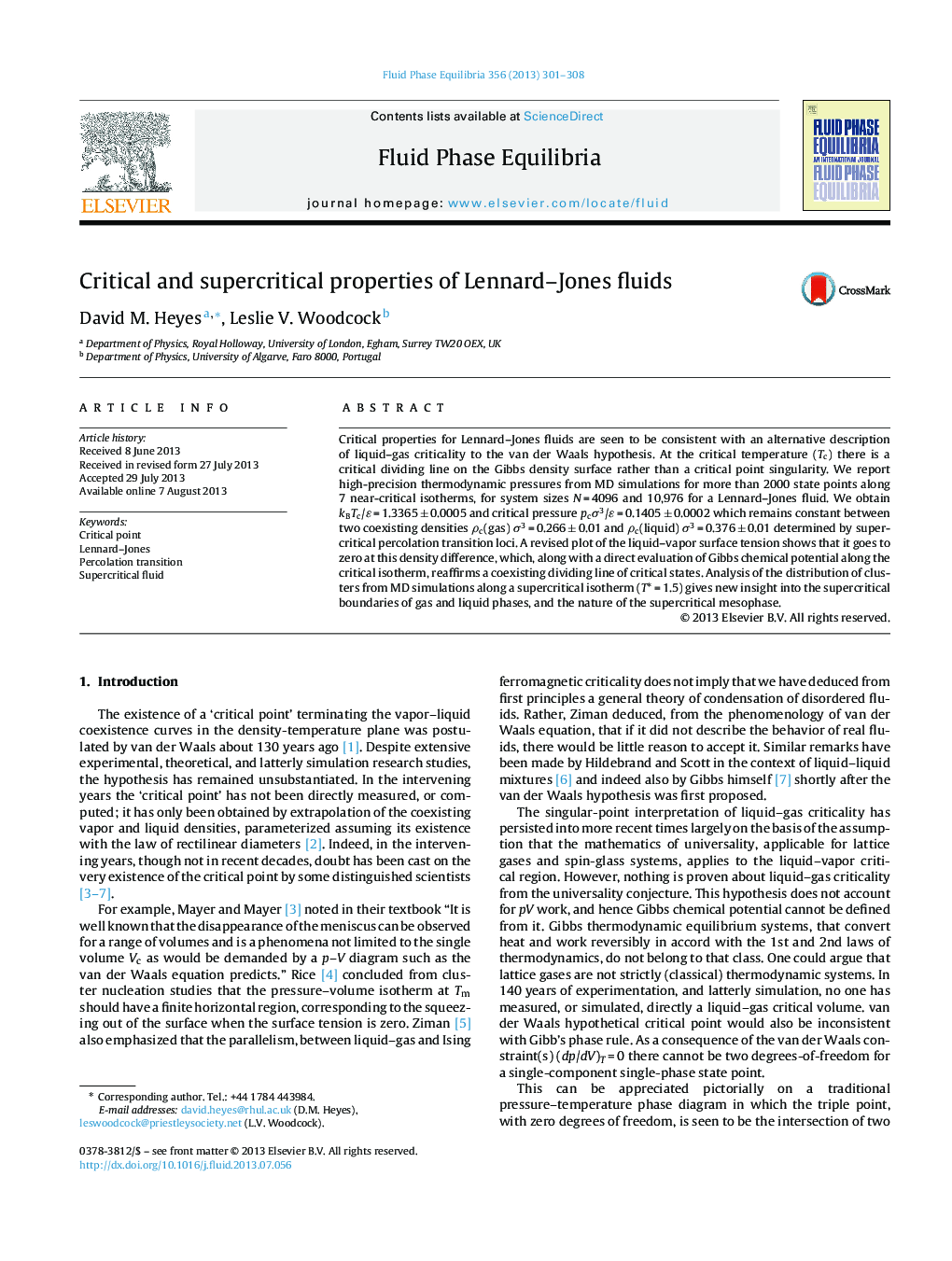| Article ID | Journal | Published Year | Pages | File Type |
|---|---|---|---|---|
| 201455 | Fluid Phase Equilibria | 2013 | 8 Pages |
•A line of critical density of finite extent exists at the critical temperature.•Two percolation lines in the super-critical region delimit a meso-phase region.•The spinodal lines are continuations of the percolation transitions above the critical temperature.•The liquid gas transition and Ising transition exhibits different critical behavior.
Critical properties for Lennard–Jones fluids are seen to be consistent with an alternative description of liquid–gas criticality to the van der Waals hypothesis. At the critical temperature (Tc) there is a critical dividing line on the Gibbs density surface rather than a critical point singularity. We report high-precision thermodynamic pressures from MD simulations for more than 2000 state points along 7 near-critical isotherms, for system sizes N = 4096 and 10,976 for a Lennard–Jones fluid. We obtain kBTc/ɛ = 1.3365 ± 0.0005 and critical pressure pcσ3/ɛ = 0.1405 ± 0.0002 which remains constant between two coexisting densities ρc(gas) σ3 = 0.266 ± 0.01 and ρc(liquid) σ3 = 0.376 ± 0.01 determined by supercritical percolation transition loci. A revised plot of the liquid–vapor surface tension shows that it goes to zero at this density difference, which, along with a direct evaluation of Gibbs chemical potential along the critical isotherm, reaffirms a coexisting dividing line of critical states. Analysis of the distribution of clusters from MD simulations along a supercritical isotherm (T* = 1.5) gives new insight into the supercritical boundaries of gas and liquid phases, and the nature of the supercritical mesophase.
